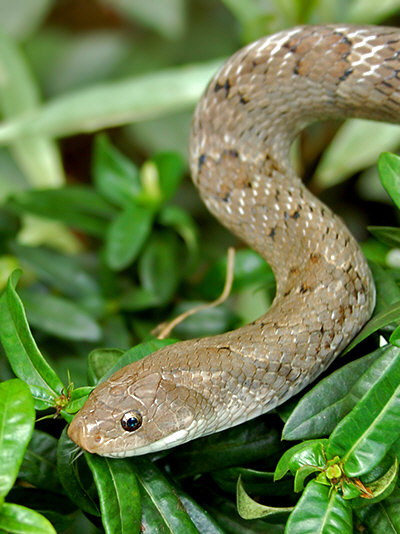 |
Family : COLUBRIDAE
Species : Oligodon fasciolatus
Maximum Size : 88 cm
The natural habitat of the
Small-banded Kukri Snake comprises forested plains, and hills up to 700
metres elevation. It appears to have adapted well to mixed, open habitats
including agricultural and village areas. It is terrestrial and typically nocturnal, but
may sometimes be encountered by day.
The species is somewhat variable in ground colour and in the intensity of
patterning. Typically it is light brown or buff to grey-brown in colour,
patterned with irregular darker brown cross-bands which are edged in black.
In some specimens every 4th or 5th band appears darker than the rest.
Towards the head the bands point forwards, and there is typically an
oblique band passing through the eye. In some specimens a stripe may be
present along the flanks. The underside is creamy white and immaculate.
Its body shape is thick and roughly cylindrical in cross-section, and the
head is the same width or only slightly wider than the neck. The eye is somewhat small in
size, and the pupil is rounded.
Little is known of the ecology of this species but, given its ability to
adapt to disturbed habitats, it probably has a varied diet. This snake is reputed to have an aggressive disposition when
disturbed.
The Small-banded Kukri Snake occurs in parts of southeastern Myanmar,
Thailand, Laos, Cambodia and Vietnam.
Fig 1 : Pale specimen from Chonburi Province, eastern Thailand. Photo thanks
to Ray Hamilton.
Figs 2 and 3 : Adult and juvenile examples from Kaeng Krachan,
Phetchaburi province, Thailand. Photos thanks to Charles Currin.
References :
Das, I., 2010. A Field Guide to the Reptiles of South-east Asia. New
Holland Publishers (UK) Ltd.
|